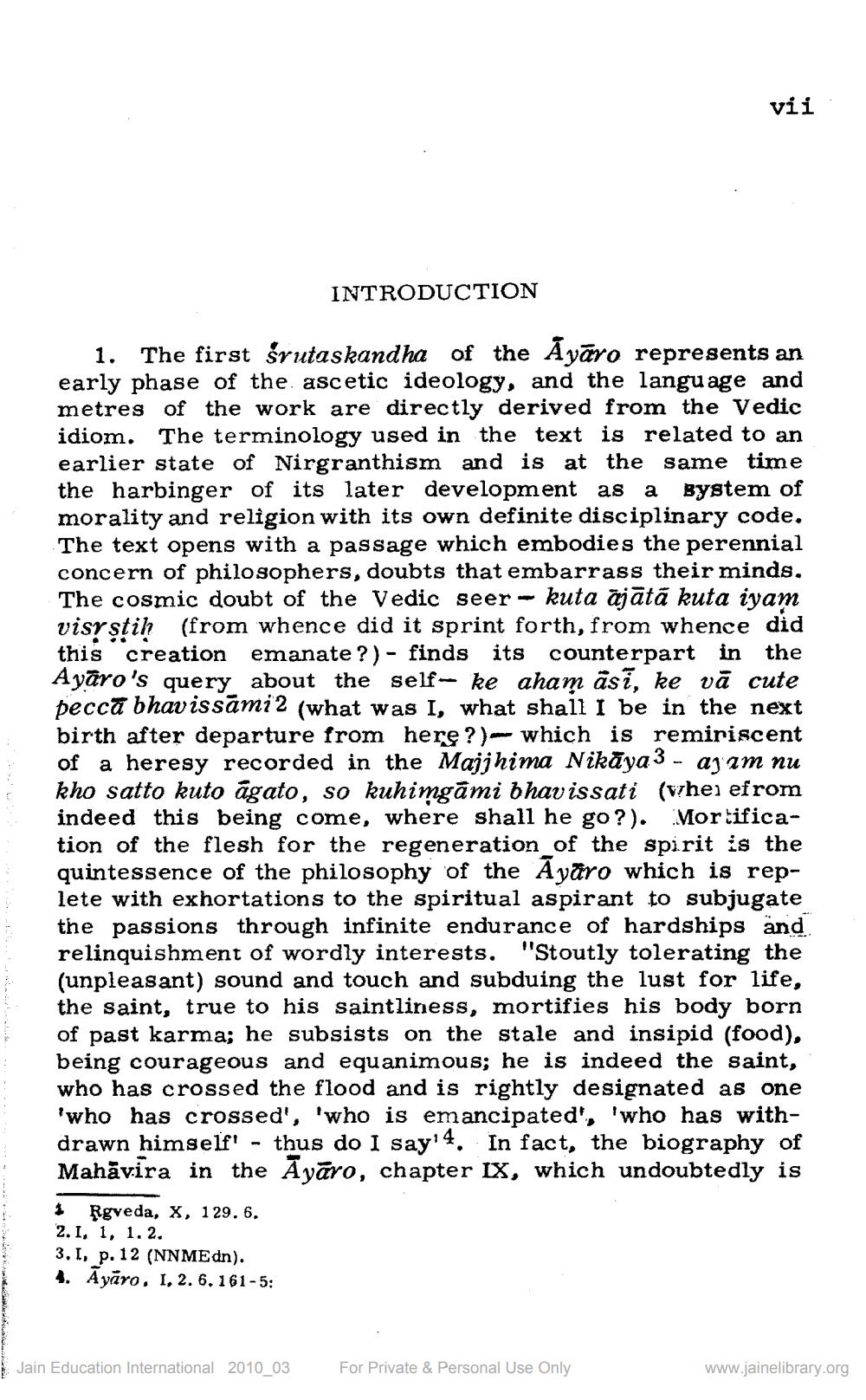________________
vii
INTRODUCTION
1. The first śrutaskandha of the Ayāro represents an early phase of the ascetic ideology, and the language and metres of the work are directly derived from the Vedic idiom. The terminology used in the text is related to an earlier state of Nirgranthism and is at the same time the harbinger of its later development as a system of morality and religion with its own definite disciplinary code. The text opens with a passage which embodies the perennial concern of philosophers, doubts that embarrass their minds. The cosmic doubt of the Vedic seer - kuta äjātā kuta iyam visy stih (from whence did it sprint forth, from whence did this creation emanate?) - finds its counterpart in the Ayaro's query about the self- ke aham āsī, ke vā cute peccā bhavissāmi 2 (what was I, what shall I be in the next birth after departure from here?) which is reminiscent of a heresy recorded in the Majjhima Nikāya3 - ajam nu kho satto kuto âgato, so kuhimgāmi bhavissati (vhei efrom indeed this being come, where shall he go?). Mortification of the flesh for the regeneration of the spirit is the quintessence of the philosophy of the Ayāro which is replete with exhortations to the spiritual aspirant to subjugate the passions through infinite endurance of hardships and relinquishment of wordly interests, "Stoutly tolerating the (unpleasant) sound and touch and subduing the lust for life, the saint, true to his saintliness, mortifies his body born of past karma; he subsists on the stale and insipid (food), being courageous and equanimous; he is indeed the saint, who has crossed the flood and is rightly designated as one 'who has crossed', 'who is emancipated', 'who has withdrawn himself' - thus do I say'4. In fact, the biography of Mahāvira in the Ayāro, chapter LX, which undoubtedly is 1 Rgveda, x, 129.6. 2. I, 1, 1.2. 3. I, p.12 (NNMEdn). 4. Ayāro, I, 2. 6.161-5:
Jain Education International 2010_03
For Private & Personal Use Only
www.jainelibrary.org




